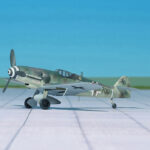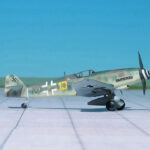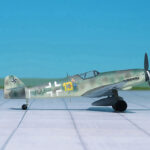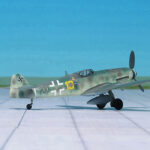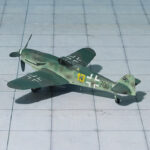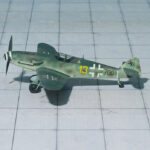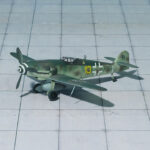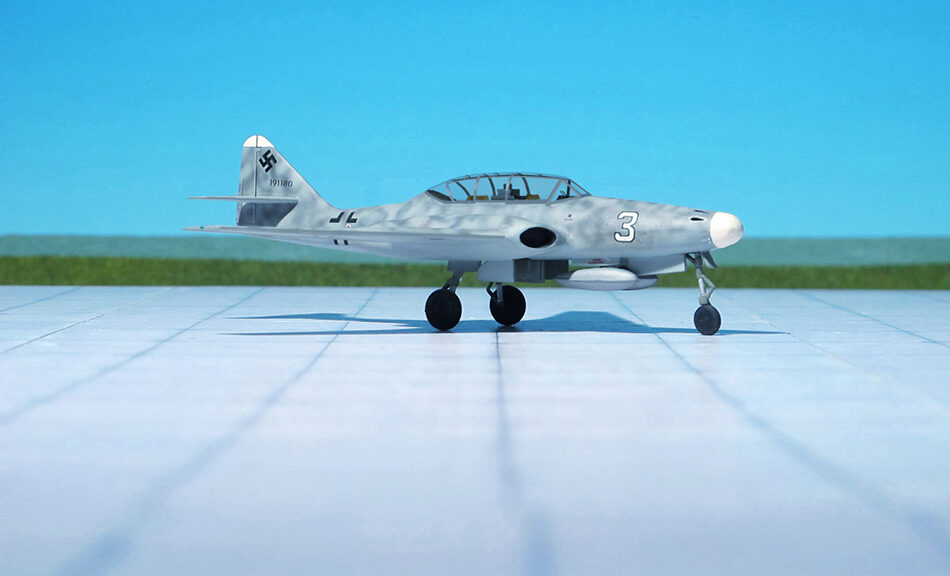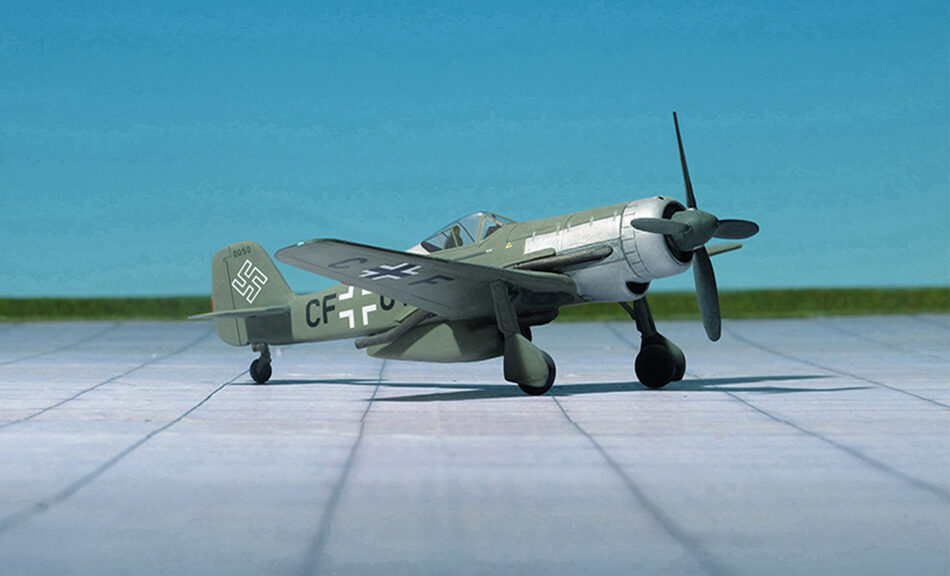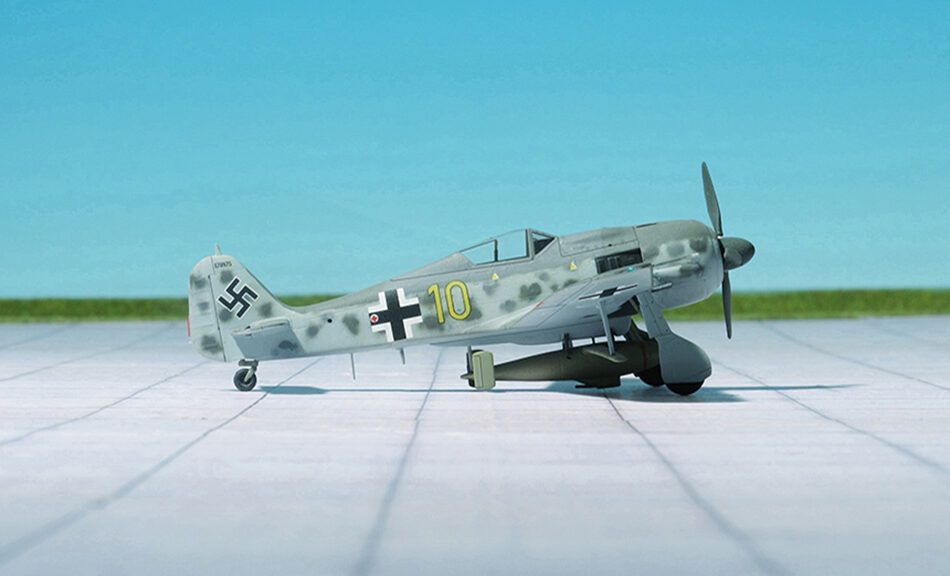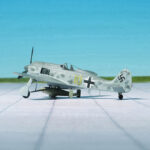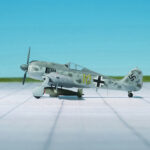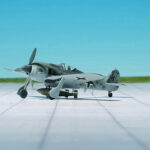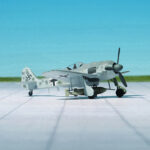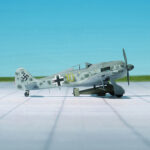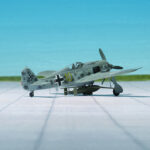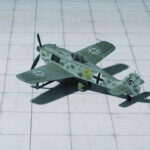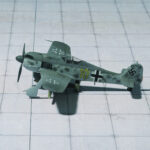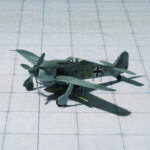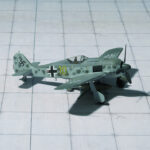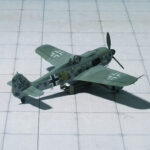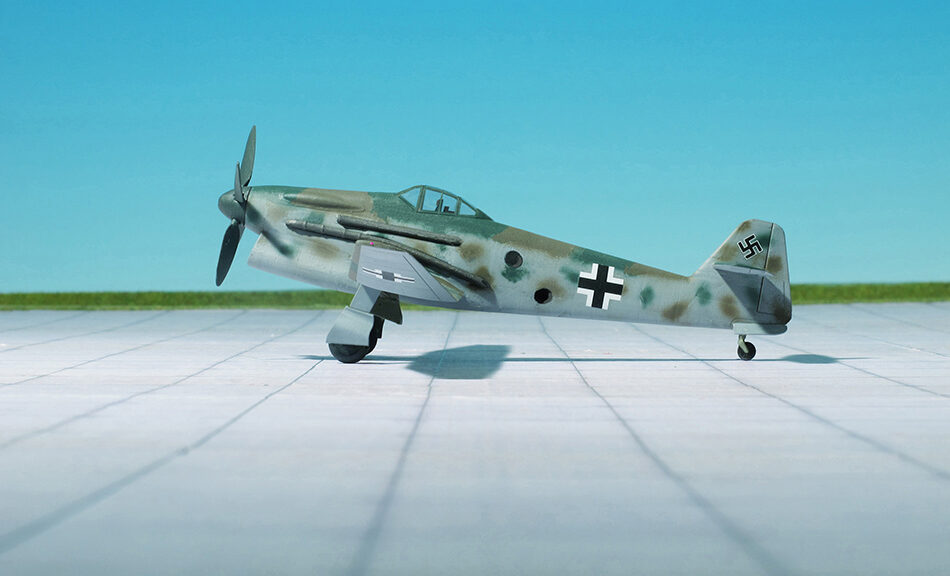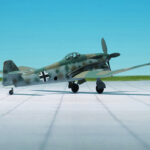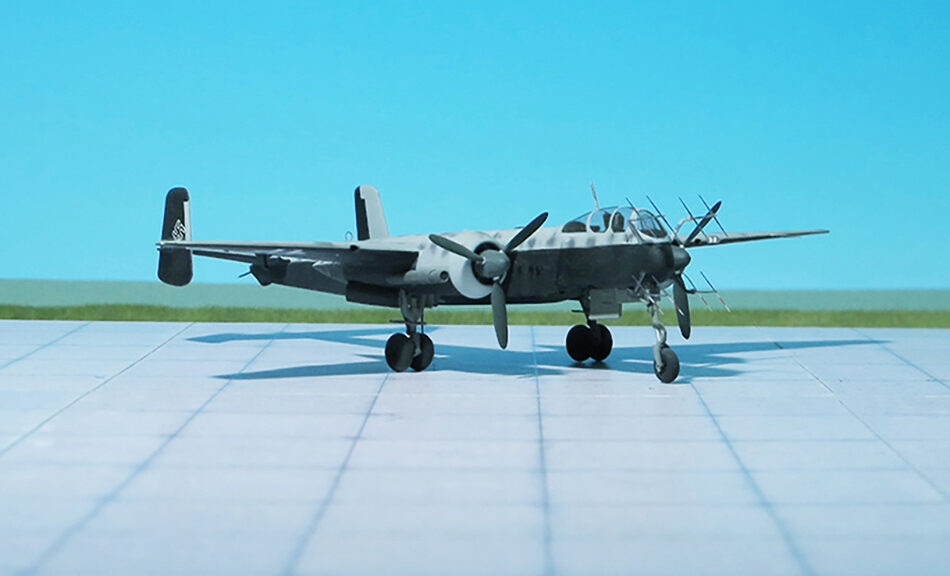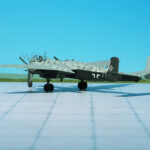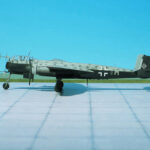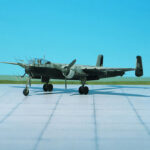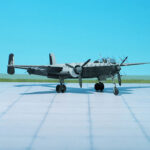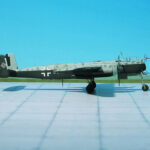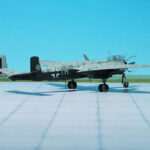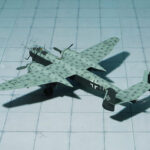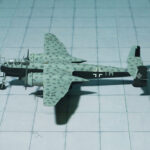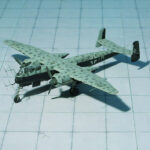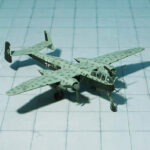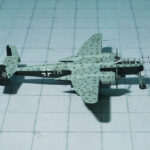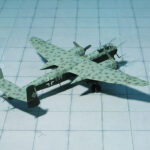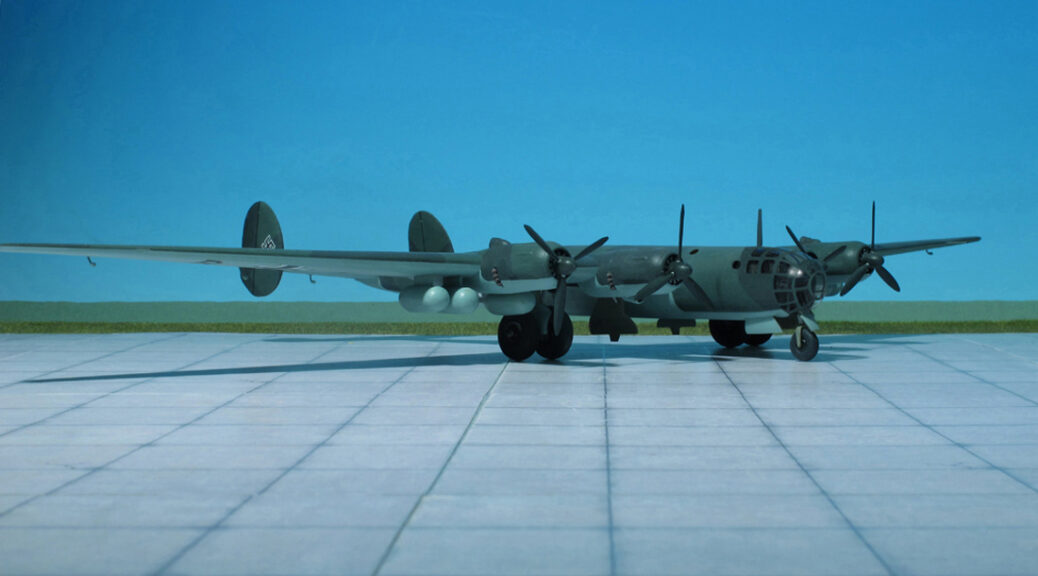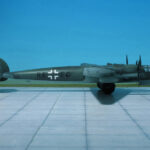TYPE: Fighter, fighter-bomber
ACCOMMODATION: Pilot only
POWER PLANT: One Daimler-Benz DB 605 DB/DC with MW 50 Methanol Water injection, rated at 1.600 hp at 20,000ft
PERFORMANCE: 440 mph at 24,600 ft
COMMENT: The Messerschmitt Bf 109 was a fighter aircraft that was designed and initially produced by the German aircraft manufacturer Bayrische Flugzeugwerke (BFW). Together with the Focke-Wulf Fw 190, the Bf 109 formed the backbone of the Luftwaffe‘s fighter force during the Scond World War. It was commonly called the Me 109 by Allied aircrew and some German aces/pilots, even though this was not the official model designation.
The Bf 109 was designed by Willy Messerschmitt and his team. It was conceived as an interceptor. However, later models were developed to fulfill multiple tasks, serving as bomber escort, fighter-bomber, day-, night-, all-weather fighter, ground-attack aircraft, and aerial reconnaissance aircraft. It was one of the most advanced fighters when it first appeared, being furnished with an all-metal monocoque construction, a closed canopy, retractable landing gear, and powered by a liquid-cooled, inverted-V12 aero engine. First flown on 29 May 1935, the Bf 109 entered operational service during 1937; it first saw combat during the Spanish Civil War.
During the Second World War, the Bf 109 was supplied to several states and was present in quantity on virtually every front in the European theatre; the fighter was still in service at the end of the conflict in 1945. It continued to be operated by several countries for many years after the conflict. The Bf 109 is the most produced fighter aircraft in history, a total of 34,248 airframes having been produced between 1936 and April 1945.
Due to the Messerschmitt Bf 109’s versatility and time in service with the German and foreign air forces, numerous variants were produced in Germany to serve for over eight years with the Luftwaffe. Most built variants were Bf 109E-3, Bf 109F-4, and Bf109G-6with more than 12.000 exemplars.
The Messerschmitt Bf 109K was the last of the series to see operational duty and the last in the Bf 109 evolutionary line. The K series was a response to the bewildering array of series, models, modification kits and factory conversions for the Bf 109, which made production and maintenance complicated and costly – something Germany could not afford late in the war. The RLM ordered Messerschmitt to rationalise production of the Bf 109, consolidating parts and types to produce a standard model with more interchangeable parts and equipment; flaws in the design of the airframe were also to be remedied. Work on the new version began in the spring of 1943 and the prototype was ready by autumn. Series production started in August 1944 with the K-4 model, due to changes in the design and delays with the new Daimler-Benz DB 605D powerplant. The K-4 was the only version to be mass-produced.
Externally the K series could be identified by changes in the locations of the radio equipment hatch, which was moved forward and to a higher position between frames four and five and the filler point for the fuselage fuel tank, which was moved forward to a location between frames two and three. The D/F loop was moved aft to sit between frames three and four on the fuselage spine and a small circular plate above the footstep on the port side of the fuselage was deleted. The rudder was fitted as standard with a Flettner tab and two fixed tabs although some rare examples were not fitted with the fixed tabs. All K-4s were to be fitted with a long retractable tail wheel with two small clamshell doors covering the recess when the tail-wheel was retracted.
Power in production K-4s was supplied by the Daimler-Benz DB 605 DB/DC engine. The DB/DC engine had an adjusting screw allowing the engine to use either B4 + MW 50 Methanol Water injection equipment or C3 fuel (DB 605 DB) or C3 fuel with MW 50 (DB 605 DC). The DB when using B4 fuel with MW 50 had an emergency power rating of 1,560 hp at 19.685 ft (1,440 hp maximum continual at 21.653 ft) and generated take-off power of 1,825 hp at 0 m at a maximum supercharger boost of 1.8 ata. The DB could also be run on higher octane C3 fuel, but the use of MW 50 was forbidden. The DC ran on C3 fuel and had a potential to generate 1,950 hp when using C3 fuel with MW 50, and a boost of 1.98 ata, but otherwise the power ratings were similar to that of the DB. A wide-chord, three-bladed VDM 9-12159A propeller of 9.8 ft diameter was used, as on the G-6/AS, G-14/AS and G-10.[
Deliveries began in mid-October 1944 and 534 examples had been delivered by the Messerschmitt A.G., Regensburg by the end of November and 856 by the end of the year. Regensburg delivered a total of 1,593 by the end of March 1945, after which production figures are missing. With such a high rate of production, despite continuous heavy fighting, by the end of January 1945, 314 K-4s – about every fourth 109 – were listed on hand with the first line Luftwaffe units. Ultimately it was intended to equip all Bf 109 units with the 109K, which marked the final stage of 109 development before the jet age.
Using MW 50 and maximum boost the Bf 109 K-4 was the fastest Bf 109 of World War II, reaching a maximum speed of 440 mph at 24,600 ft altitude. Without MW 50 and using 1.80 ata the K-4 reached 416 mph at 30,000 ft. The initial rate of climb was 2,790 ft/min, without MW 50 and 3,540 ft/min, using MW 50.
The Bf 109 remained comparable to opposing fighters until the end of the war but the deteriorating quality of the thousands of novice Luftwaffe pilots pressed into service by this stage of the war meant the BF 109’s strengths were of little value against the numerous and well-trained Allied fighter pilots (Ref.: 24).



